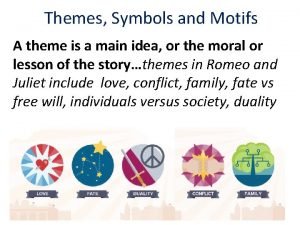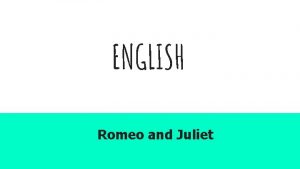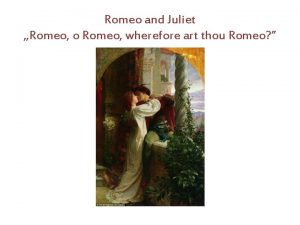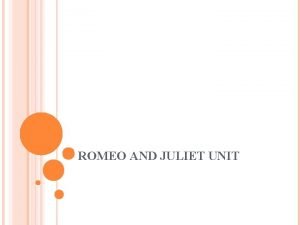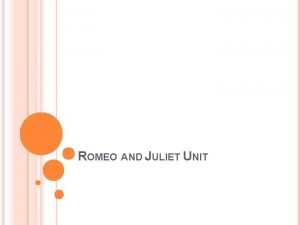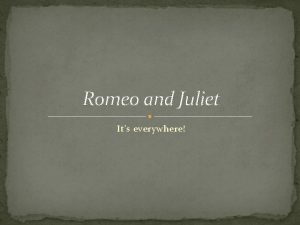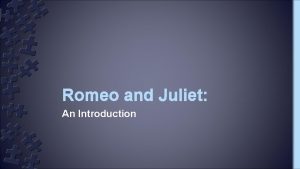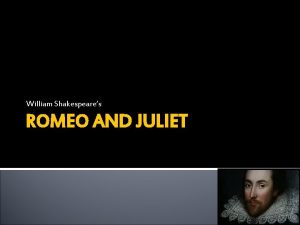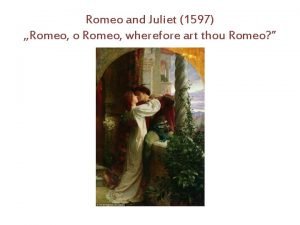Motif Light and Darkness in Romeo and Juliet








- Slides: 8

Motif: Light and Darkness in ‘Romeo and Juliet’ Ms. Deasy

What is a MOTIF? A distinctive idea, image, word, or phrase that is repeated throughout the literary work.

• This play is filled with references to light and darkness. When we first hear about Romeo, he is described as shutting “fair daylight out” of his room, and making himself “an artificial night” in which to sulk about his unrequited love for Rosaline. Here, darkness is described as the ideal environment for a lover. • Darkness continues to serve this role throughout the play, as Romeo and Juliet meet in the dark of night to conceal their relationship. They cannot parade their forbidden love around town in the light of day—instead, they must be together at night time, and Romeo must leave Juliet’s bedroom before the sun comes up.

• But although Romeo and Juliet interact under the cover of “blackbrowed night”, their love is a source of metaphorical light. When Romeo first sees Juliet at the ball, he exclaims that she “doth teach the torches to burn bright”. • He compares her to other shining sources of illumination: a rich jewel, stars, and the sun. Even when Juliet is lying entombed in the dark Capulet crypt, Romeo says that her presence creates “a feasting presence full of light”. Her beauty makes a grave look like “a lantern” to him.

• In this play darkness is associated with death and with love—two themes that seem very different until we see how they are pulled together by the storyline.

• The cruel circumstances of Romeo and Juliet mean that for them, death is the only place that they can be together. • While they are alive, they will be forced to be apart: Romeo banished to Mantua, and Juliet married to Paris. • In ‘Romeo and Juliet’, Shakespeare deliberately weaves together themes of light and dark and day and night in ways which emphasize the play’s other opposing themes: life and death, love and hate.

• One of the more important instances of this motif is Romeo’s lengthy meditation on the sun and the moon during the balcony scene, in which Juliet, metaphorically described as the sun, is seen as banishing the “envious moon” and transforming the night into day (Act 2, Scene 1, line 46).

• A similar blurring of night and day occurs in the early morning hours after the lovers’ only night together. Romeo, forced to leave for exile in the morning, and Juliet, not wanting him to leave her room, both try to pretend that it is still night, and that the light is actually darkness: “More light and light, more dark and dark our woes” (Act 3, Scene 5, line 36).

